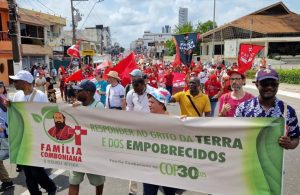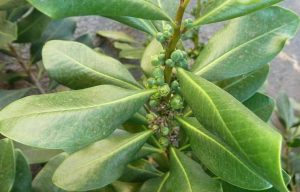In spite of being a predominantly Buddhist country, the people of Sri Lanka celebrate Christmas (Nattal) in their own unique way, using native products. For Sri Lankans, Christmas is a time for celebration thriving in an atmosphere of unity regardless of religious beliefs and culture.
Long before the legendary seafarer ‘Sinbad’ chanced to harbour in waters lapping the little isle of ‘Serendip,’ European colonisers discovered Ptolemy’s ‘Ceylon” of which pilgrims from the distant Orient have been visiting.
During the reign of the Indian Emperor Asoka (2nd Century BC), the Island’s North Central Province was home to Sinhala Kings under whose patronage Buddhism spread. Following India’s gift of a sapling from the Bodhi Tree under which Sidharta Gautama Buddha attained ‘nirvana,’ the ancient city of Anuradhapura continues to draw pilgrims and visitors from everywhere. The Bodhi Tree is regarded as the oldest in the world (2,200 years).
Anticipating his apostolic visit to Sri Lanka, Pope Francis once said, “Your homeland is called the Pearl of the Indian Ocean, on account of its natural beauty and its shape.” There was a rich ethnic mixture of nearly half a million Lankans assembled to welcome the Pope upon his arrival in Colombo in January 2015 (and flying thereafter to the Philippines).
This tropical island has a pleasantly regular temperature with December and January being the coolest months at 27°C; and April and May being the hottest at approximately 30°C. During the British occupation in the 19th century, choice ‘Ceylon Tea’ was exported from tea gardens surrounding the Central Hills of Nuwara Eliya which became world famous.
Today, in a state with predominantly over 70% Buddhists, minority groups of Hindus, Moslems and other Christian communities thrive together while practicing and upholding a blend of cultures, languages, traditions and religious belief.
The ancient Sinhalese gave great importance to agricultural farming. The monastic ashrams, stupas and temples they built in the depths of the Island are surrounded by acres of paddy fields in which resident farmers cultivated rice, and varieties of pulses, lentils, fruits, vegetable and tubers.
From massive tanks their ancient kings built, water was collected and carefully channelled via aqueducts for use during drier seasons. Thus the country became self-sufficient in food and agricultural products, rice being Sri Lanka’s staple diet.
‘December’ in the early Sinhala calendar was named ‘un-du-vap.’ The word ‘vap’ is remembered to this day when celebrating the annual ‘vap-magula’ or harvest festival. Following Christianization by the Portuguese in 1505, December became known as the ‘Nattal masse’ (the month of Christmas).
‘Nattal masse’ for children meant the end of school exams and the start of a five-week-long holiday leading up to a bountiful season of joyful feasting and exchange of gifts. Around city malls and urban shopping centres, streets overflow with crowds buying cakes, biscuits, sweets, wines, new clothing, dainty slippers, firecrackers, and presents for children – most of which arrive in good time from across the seas.
At bazaars and village fairs in the countryside, vendors gather to entice families who have another good reason to celebrate from their abundant year-end harvests.
Native products are fancifully laid out or mounted neatly on tall wooden racks to attract the attention of the old, the young village maidens, and of course the children. The festive cheer of ‘Nattal masse’ prevails until New Year throughout the countryside to awaken joy and goodwill among all, regardless of religious belief, social level or communal distinctions.
Tropical flowers of diverse hues and fragrances crown the treetops and deck the surroundings with equal grace as the local manels, nelums, and olus (water lilies, lotus, etc.) are serenely cushioned on translucent lakes and interspersed among the plains and valleys.
(Alex Van Arkadie)






